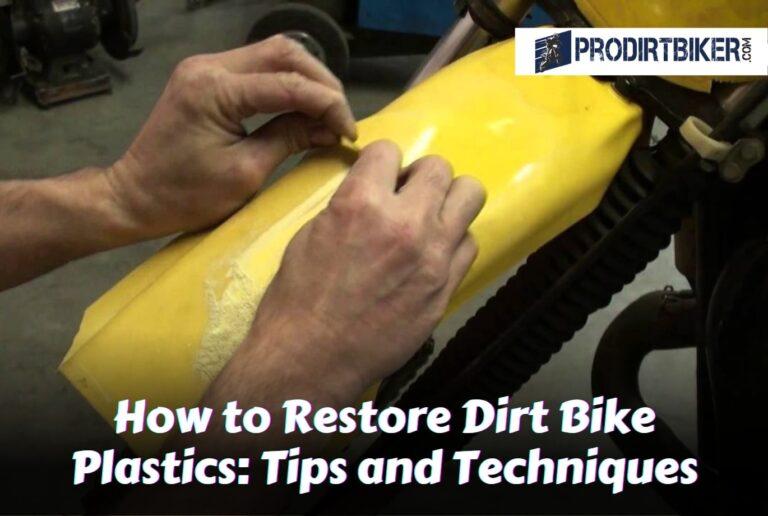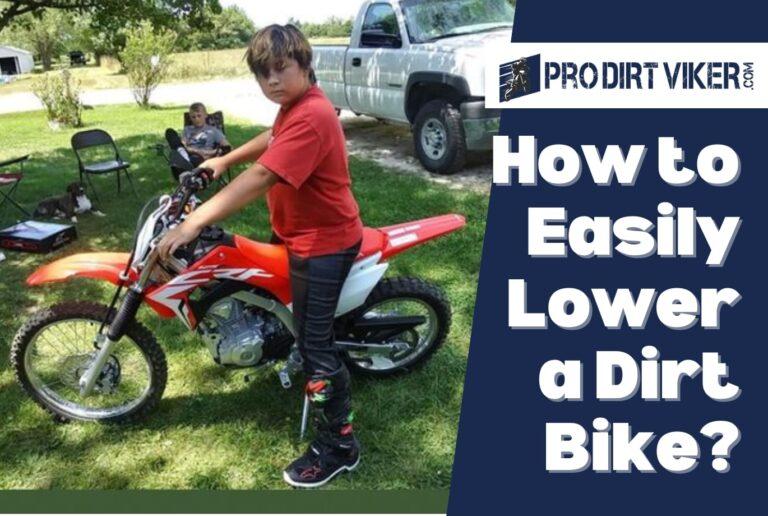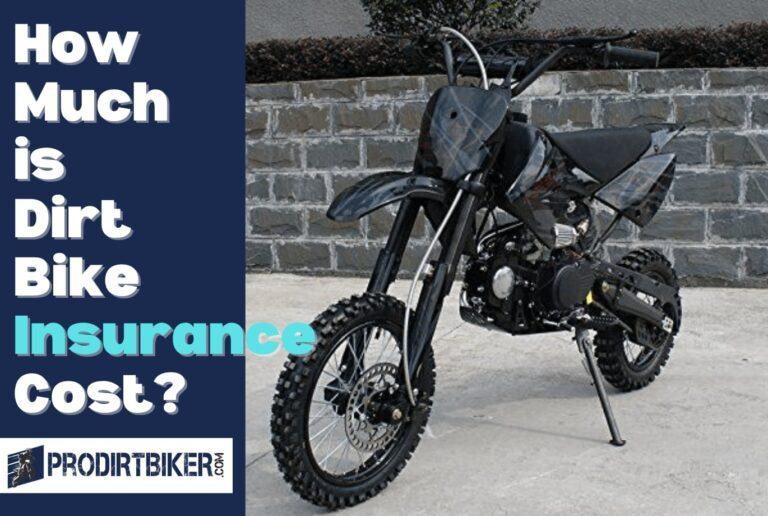How To Tie Down a Dirt Bike in a Truck? Expert Tips
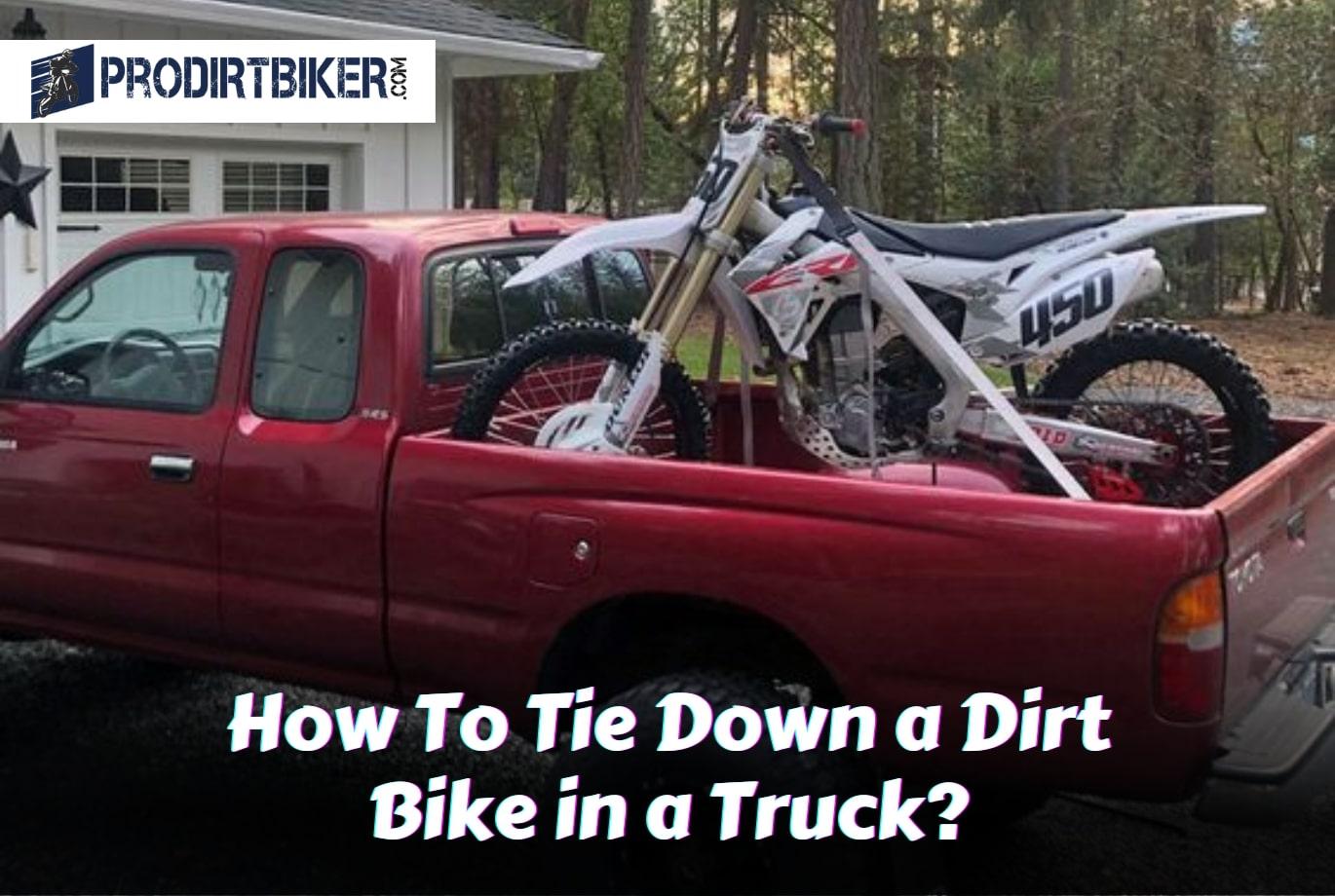
If you’re an avid dirt bike rider, you know that transporting your bike safely is crucial. The last thing you want is for your prized possession to come loose and get damaged during transit. That’s why learning how to properly tie down a dirt bike in a truck is essential.
In this blog post, we’ll walk you through the step-by-step process of securing your dirt bike in the back of your truck, ensuring that it stays in place no matter how bumpy the road gets. So grab your straps and let’s get started!
How To Tie Down a Dirt Bike in a Truck?
How to Securely Transport Your Dirt Bike in a Truck?
To tie down a dirt bike in a truck, use ratchet straps or tie-down straps secured to the truck’s anchor points and looped around the bike’s handlebars and foot pegs. Transporting a dirt bike safely in a truck requires proper securing to prevent damage.
Tying down a dirt bike in a truck is essential to ensure it stays securely in place during transportation, preventing any damage to the bike and ensuring safety on the road. Here’s a step-by-step process on how to tie down a dirt bike in a truck:
Tools and Materials Needed:
- Dirt bike with a functioning kickstand.
- Ratchet straps (usually two to four, depending on the size of the truck and bike).
- Soft loop straps (optional, for added protection).
- Truck bed tie-down anchors or D-rings.
- Wheel chocks (optional but recommended).
- Protective padding (e.g., old towels, foam, or rubber mats).
Step 1: Prepare the Truck Bed a. Ensure the truck bed is clean and free of debris. b. If available, install wheel chocks to help stabilize the dirt bike.
Step 2: Position the Bike a. Start by parking the truck on a flat surface. b. Engage the truck’s parking brake. c. Place the dirt bike in the center of the truck bed, with the front wheel facing the front of the truck. The bike should be aligned straight.
Step 3: Attach Soft Loop Straps (Optional) a. If you have soft loop straps, attach them to the handlebars. This adds extra protection to prevent any damage to the bike’s controls. b. Secure the loose ends of the soft loop straps to the truck bed anchors or D-rings.
Step 4: Secure the Front Wheel a. Using a ratchet strap, loop it around the front wheel, just above the tire. b. Tighten the strap, making sure it compresses the front suspension slightly but not too much. You want the bike to be stable but not overly compressed. c. Attach the loose end of the strap to a truck bed anchor or D-ring. d. Ensure the strap is tight and secure.
Step 5: Secure the Rear Wheel a. Use another ratchet strap to secure the rear wheel. b. Loop the strap around the rear wheel, just above the tire. c. Tighten the strap, compressing the rear suspension slightly. d. Attach the loose end of the strap to a truck bed anchor or D-ring. e. Ensure the strap is tight and secure.
Step 6: Check and Adjust a. Double-check all straps to make sure they are secure and the bike is stable. b. Test the bike’s stability by gently pushing and pulling on it to ensure it doesn’t shift.
Step 7: Protect Sensitive Areas (Optional) a. If there are any sensitive parts of the bike, like plastic bodywork, you can place padding or towels between the straps and the bike to prevent scratches or damage.
Step 8: Final Check a. Walk around the truck and bike one last time to ensure everything is secure. b. Confirm that the bike is positioned squarely in the truck bed.
Step 9: Drive with Caution a. When driving, be mindful of the bike’s position in the truck bed. b. Take turns slowly and avoid sudden stops or accelerations.
Step 10: Additional Tips and Considerations
1. Use High-Quality Straps: Invest in good quality ratchet straps that can handle the weight and tension required to secure your dirt bike. Check the straps for any signs of wear or damage before use.
2. Proper Tension: Ensure the straps are tightened enough to hold the bike securely in place but not so tight that it causes excessive compression on the suspension.
3. Even Weight Distribution: Make sure the weight of the bike is evenly distributed between the front and rear wheel straps. This helps maintain stability during transportation.
4. Keep the Bike Upright: Avoid leaning the bike on its side when tying it down, as this can cause instability and damage. Use the kickstand to keep the bike upright.
5. Protect the Handlebars: If your bike has wide handlebars or a windshield, take extra care to ensure they don’t contact the truck’s sides or rear window during transport.
6. Check Local Regulations: Familiarize yourself with local laws and regulations regarding the transportation of motorcycles in a truck bed. Some areas may have specific requirements.
7. Test the Straps Again: After a short distance of driving, pull over and recheck the straps. The vibrations from the road can sometimes cause them to loosen slightly.
8. Secure Loose Items: Remove any loose items from the bike, such as tools or gear, to prevent them from falling during transit.
9. Tailgate Position: If your truck has a removable tailgate, consider whether it should be up or down during transport. Leaving it down may provide better airflow and reduce wind resistance but can also affect the bike’s stability.
10. Weather Considerations: If you anticipate rain during your journey, use waterproof covers or tarps to protect your dirt bike from water damage.
11. Practice Safe Driving: Drive cautiously, especially when the dirt bike is loaded in the truck. Avoid sudden stops, sharp turns, and excessive speed.
12. Secure Loose Ends: After you’ve tightened the straps, be sure to secure any excess strap length to prevent them from flapping in the wind.
13. Communication: If you’re transporting the dirt bike with another person, communicate clearly about the loading and unloading process. Having an extra set of eyes can help ensure everything is done safely.
14. Unloading: When you reach your destination, follow the reverse process carefully, removing straps and soft loops without causing any sudden movements that could lead to accidents.
Remember that safety is paramount when transporting a dirt bike in a truck. Always prioritize securing the bike properly to avoid accidents, damage, or injury. If you’re unsure about any aspect of the process, seek guidance from experienced riders or consult the owner’s manual for your dirt bike for additional information on securing it for transport.
Understanding The Importance Of Proper Dirt Bike Transportation
Transporting your dirt bike safely is of utmost importance to ensure its proper condition and avoid any potential damage. Whether you’re heading to a track, trail, or simply moving your bike from one location to another, understanding the significance of securely transporting your dirt bike is essential.
In this section, we will delve into the key points of proper dirt bike transportation and the reasons why it should be prioritized. So, let’s get started.
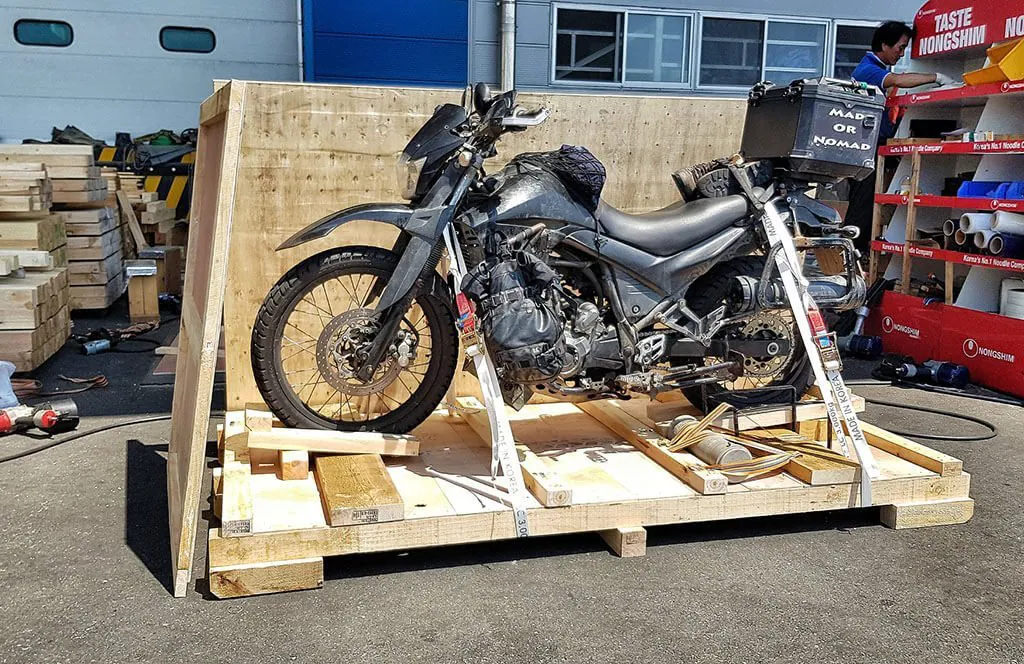
The Significance Of Securely Transporting Your Dirt Bike:
- Protecting your investment: Your dirt bike is not just a vehicle; it’s an investment that you want to preserve. By carefully securing it during transportation, you can avoid scratches, dings, and potential damage to valuable parts.
- Ensuring your safety and others’: A securely tied down dirt bike prevents it from moving around or falling during transit. This is not only crucial for protecting your bike, but also to ensure the safety of yourself, passengers, and other drivers on the road.
- Avoiding unnecessary costs: Repairing damages caused during transportation can be expensive. By taking the necessary precautions to secure your dirt bike, you can avoid unnecessary repair costs and ensure that your bike remains in optimal condition for longer.
- Minimizing wear and tear: Excessive movement or vibrations during transportation can accelerate wear and tear on various parts of your dirt bike. By properly securing it, you can minimize these factors and prolong the lifespan of your bike.
- Easy and stress-free transportation: Knowing that your dirt bike is securely tied down in your truck can give you peace of mind during the journey. This allows you to focus on the road ahead and enjoy the anticipation of your next ride.
By understanding the importance of proper dirt bike transportation and taking the necessary precautions to secure your bike, you can avoid damage, preserve its condition, and ensure a smooth and worry-free ride. Now that we’ve covered the significance, let’s move on to the practical steps of how to tie down a dirt bike in a truck.
Stay tuned!
Essential Equipment For Transporting Your Dirt Bike
Tying down a dirt bike securely in a truck is crucial to ensure its safe transportation from one place to another. Whether you’re heading to a dirt bike race or simply taking your bike on an adventure, it’s vital to have the right equipment to properly secure your dirt bike in the truck.
In this section of the blog post, we will discuss the essential equipment needed for transporting your dirt bike. Let’s dive in!
Choosing The Right Truck For Transportation
- When selecting a truck for transporting your dirt bike, consider the following factors:
- The truck’s size and bed dimensions should be suitable for accommodating your dirt bike.
- Opt for a truck with a durable and well-maintained bed to ensure a secure transport.
- Consider the weight capacity of the truck, ensuring it can handle the load of your dirt bike.
- Look for features like tie-down hooks or anchor points in the truck bed to make securing your dirt bike easier.
Securing The Dirt Bike With High-Quality Tie-Down Straps
- Utilize high-quality tie-down straps to securely fasten your dirt bike in the truck. Here’s why:
- Choose straps with a minimum breaking strength of 1,500 pounds to ensure they can withstand the weight and force associated with transportation.
- Opt for straps with cam buckles for easy tightening, ensuring a snug fit and preventing any unnecessary movement during the journey.
- Attach the tie-down straps to sturdy parts of the dirt bike, such as the handlebars, footpegs, or triple clamp, to create a secure connection.
- Ensure the straps are tight and free of any twists or knots that could compromise their strength.
Utilizing A Sturdy Truck Bed Extender
- A truck bed extender can be a valuable tool when transporting your dirt bike. Here’s why it’s beneficial:
- A bed extender provides extra support for longer dirt bikes, preventing them from hanging off the edge of the truck bed.
- Look for a sturdy bed extender with adjustable height and width settings to fit various truck bed sizes and dirt bike lengths.
- Securely attach the bed extender to the truck bed using tie-down straps or bungee cords to ensure it remains stable throughout the journey.
- Make sure the dirt bike is positioned centered on the bed extender to distribute the weight evenly.
By following these guidelines and utilizing the appropriate equipment, you can ensure a safe and secure transportation for your dirt bike. Remember to choose the right truck, use high-quality tie-down straps, and consider a truck bed extender if needed. Now that you have the essential equipment knowledge, you are ready to hit the road with peace of mind!
Preparing Your Dirt Bike For Safe Transportation
Transporting a dirt bike safely in a truck requires proper preparation to protect both the bike and the vehicle. By following a few key steps, you can ensure that your dirt bike makes it to its destination without any damage.
In this section, we will focus on preparing your dirt bike for safe transportation. Let’s dive in!
Cleaning The Bike And Removing Any Loose Parts
- Thoroughly clean your dirt bike to remove any dirt or debris that could cause scratching during transportation.
- Inspect your bike for any loose parts such as mirrors, handlebar grips, or fenders. Remove them and secure them separately to avoid damage.
Disabling The Bike’S Electrical System And Removing The Battery
- Before loading your dirt bike onto the truck, disconnect the battery to prevent any potential electrical issues during transport.
- Use caution and follow proper procedures when disconnecting the battery to avoid any safety hazards.
Protecting Delicate Components With Appropriate Padding
- Protect delicate components of your dirt bike, such as the suspension, by using appropriate padding.
- Use foam or fabric wraps to cover areas such as the forks, rear suspension, and exhaust pipe to minimize the risk of scratches or damage.
Remember, the key to safe transportation is proper preparation. By cleaning your bike, removing loose parts, disabling the electrical system, and using the right padding, you can ensure a smooth and secure journey for your dirt bike. Now that you’ve prepared your dirt bike, it’s time to properly secure it in the truck for transport.
Stay tuned for our next section on tying down your dirt bike securely in a truck.
Loading Your Dirt Bike Into The Truck
If you’re an avid dirt bike rider looking to transport your beloved machine in a truck, you’ll need to ensure that it’s securely tied down to prevent any damage or accidents during transit. One of the most crucial steps in this process is loading your dirt bike into the truck safely and effectively.
In this section, we’ll explore the key points to consider when loading your dirt bike and how to do it properly.
Determining The Best Loading Technique For Your Truck:
- Take into account the size and type of your truck to determine the most suitable loading technique.
- Consider whether your truck bed has a lift gate or if you’ll need a loading ramp to assist with the process.
- Evaluate the ground clearance of your dirt bike and make sure it can be safely loaded onto the truck without hitting any obstacles.
Utilizing A Loading Ramp Safely And Effectively:
- Invest in a sturdy and reliable loading ramp that can support the weight of your dirt bike.
- Position the ramp securely against the truck bed and ensure it’s stable and won’t slip during the loading process.
- Gradually and steadily push or walk your dirt bike up the ramp, maintaining control and balance at all times.
Ensuring Proper Weight Distribution For Balance:
- Distribute the weight of your dirt bike evenly within the truck bed to maintain balanced and stable transportation.
- Place the bike towards the front end of the truck bed to avoid any excessive weight on the rear tires, which could lead to steering difficulties.
- Utilize tie-down straps to secure your dirt bike to the truck bed, ensuring it doesn’t shift or move during transport.
Remember, loading your dirt bike into a truck requires careful attention and adherence to safety measures. By following the recommended techniques and considering the specific requirements of your truck and dirt bike, you can ensure a smooth and secure loading process.
So, get ready to hit the road and enjoy your next off-road adventure!
Securing Your Dirt Bike In The Truck Bed
Positioning the dirt bike securely within the truck bed:
When it comes to transporting your dirt bike in a truck, ensuring its safety is of utmost importance. Properly positioning the bike within the truck bed is the first step in securing it for a smooth and worry-free journey. Here are a few key points to consider:
- Place the dirt bike in a forward-facing position: To maintain stability during transit, position the bike facing forward in the truck bed. This allows the weight of the bike to be evenly distributed and minimizes any potential movement.
- Use a wheel chock: A wheel chock is a device that helps stabilize the front wheel of the dirt bike. Install a wheel chock at the front of the truck bed and firmly secure the front wheel in place. This prevents the bike from rolling back and forth while in transit.
- Utilize soft padding: To protect both the dirt bike and the truck bed, consider placing soft padding between the bike and the truck’s surface. This helps prevent any scratches or damage that may occur due to vibrations or sudden movements during transportation.
Using quality tie-downs to secure the bike:
Securing your dirt bike in the truck bed is crucial to prevent any accidents or damage. Here are some key points to remember when using tie-downs:
- Choose reliable tie-down straps: Invest in high-quality tie-down straps specifically designed for securing motorcycles. Ensure that the straps are strong, durable, and in good condition. Avoid using old or worn-out straps that may compromise the stability of the bike.
- Position the tie-downs strategically: Place the tie-downs at four points, two in the front and two in the back of the dirt bike. This creates a balanced and secure hold, minimizing any potential movement during transportation.
- Tighten the tie-downs properly: Once the bike is positioned in the truck bed and the tie-downs are in place, make sure to tighten them securely. Double-check that the straps are taut and the bike is firmly secured.
Double-checking the security of the tie-downs:
To ensure the dirt bike remains securely fastened throughout the journey, it is crucial to double-check the tie-downs before hitting the road. Here’s what you need to do:
- Test each tie-down individually: Give each tie-down strap a firm tug to ensure it is properly secured. If there is any looseness or excessive movement, readjust and tighten the strap accordingly.
- Verify the bike’s stability: Gently push and pull the dirt bike to check if it moves or shifts within the truck bed. If there is any noticeable movement, reposition the bike and re-secure the tie-downs until the bike is stable.
- Inspect the tie-downs periodically: During your journey, make it a habit to periodically inspect the tie-downs and the bike’s positioning. This helps identify any potential issues or loosening, allowing you to take immediate action and prevent accidents.
By following these guidelines and taking the necessary precautions, you can ensure the safe transportation of your dirt bike in a truck. Securely positioning the bike within the truck bed, using high-quality tie-downs, and double-checking their security will provide peace of mind and allow you to enjoy your off-road adventures without worry.
Additional Tips For Safe Dirt Bike Transportation
Transporting a dirt bike in a truck can be a nerve-wracking experience, especially if you’ve invested a significant amount of money into your off-road machine. To ensure a safe journey for both you and your prized possession, it’s essential to take additional precautions.
In this section, we’ll discuss some practical tips that will help you transport your dirt bike with peace of mind. Let’s dive in!
Checking The Bike’S Fluids Before And After Transportation
Before hitting the road, it’s crucial to examine your dirt bike’s fluids. This simple yet often overlooked step can save you from potential headaches down the line. Here are the key points to keep in mind:
- Check the oil level: Ensure that the oil level is within the designated range and top it up if necessary.
- Inspect the coolant: Make sure the coolant level is appropriate, ensuring that your engine doesn’t overheat during the journey.
- Verify fuel leaks: Look for any sign of fuel leaks around the carburetor or fuel tank. Repair any leaks before loading your bike onto the truck.
- Assess brake fluid: Check your brake fluid levels and ensure they are at the recommended levels. If needed, fill them up before transportation.
Inspecting The Truck Bed And Tie-Downs For Any Signs Of Wear
The condition of your truck bed and tie-downs play a crucial role in the safe and secure transportation of your dirt bike. Here’s what you need to consider:
- Check the truck bed: Inspect the truck bed for any signs of rust, cracks, or sharp edges. Address any issues before loading your dirt bike.
- Examine tie-down hooks: Ensure that the tie-down hooks are securely attached to the truck bed and aren’t showing any signs of wear or damage.
- Test tie-down straps: Before loading your bike, give each tie-down strap a thorough inspection. Look for any fraying or weak spots that could compromise their strength and replace them if necessary.
- Consider a rubber mat: Placing a rubber mat or a non-slip surface in the truck bed can help prevent your dirt bike from shifting during transport.
Observing Speed Limits And Driving Cautiously During Transport
Taking safety precautions while driving is just as important as preparing your dirt bike and truck. Here’s what you need to remember:
- Adhere to speed limits: Observe the speed limit and avoid sudden accelerations or decelerations that could cause your bike to shift.
- Drive cautiously on rough terrain: If you encounter bumpy or uneven roads, adjust your driving speed accordingly to minimize the impact on your dirt bike.
- Stay vigilant in traffic: Keep an eye out for sudden stops, swerving vehicles, and ensure that your load remains secure throughout the journey.
- Avoid distractions: Stay focused on the road and refrain from distractions, such as using your phone or engaging in other activities that take your attention away from driving.
By following these additional tips, you can make sure your dirt bike arrives at its destination unscathed. Take the time to check your bike’s fluids, inspect your truck bed and tie-downs, and drive cautiously during transportation. With these precautions in place, you’ll enjoy peace of mind as you embark on your off-road adventures.
Expert Tricks For Long-Distance Dirt Bike Transportation
For long-distance dirt bike transportation, it’s important to follow expert tricks that ensure the safety and security of your bike. From utilizing wheel chocks and tie-downs for added stability to protecting your bike from the elements with a weatherproof cover, these tips will help you transport your dirt bike with ease.
Don’t forget to regularly check both the bike and the truck bed during your journey to ensure everything stays in place. Let’s dive into the details and learn how to tie down a dirt bike in a truck like a pro.
Utilizing A Wheel Chock Or Wheel Tie-Downs For Added Stability:
- Use a wheel chock to keep the front wheel of your dirt bike secure and stable.
- Make sure the wheel chock is properly installed and firmly positioned in the truck bed.
- Attach tie-down straps to both the front and rear of the dirt bike, securing them tightly to the truck bed anchor points.
- Use ratchet straps or cam buckle tie-downs for maximum stability and support.
- Adjust the tension of the straps to ensure the dirt bike remains firmly in place without excessive movement.
Using A Weatherproof Cover To Protect The Bike From The Elements:
- Invest in a high-quality weatherproof cover that fits your dirt bike size.
- Before covering the bike, ensure it is clean and dry to avoid trapping moisture.
- Securely cover the entire bike, including the handlebars, seat, and exhaust, to protect it from rain, dust, and debris during transportation.
- Use additional straps or bungee cords to hold the cover securely in place, preventing it from flapping or coming loose.
Regularly Checking The Bike And The Truck Bed During Long Journeys:
- Stop periodically to inspect the dirt bike and the truck bed.
- Check the tie-down straps for any signs of loosening or wear.
- Look for any movement or shifting of the bike within the truck bed.
- Re-tighten the straps if necessary to maintain a secure and stable transportation setup.
- Use additional padding or blankets to protect the bike from scratches or damage caused by contact with the truck bed or other objects.
Remember, following these expert tricks will help ensure the safe and secure transportation of your dirt bike, allowing you to enjoy your off-road adventures without any worries.
Frequently Asked Questions Of How To Tie Down A Dirt Bike In A Truck
How Do You Tie Down A Dirt Bike In A Truck?
To tie down a dirt bike in a truck, use ratchet straps or tie-downs, secure the front wheel, and compress the suspension.
What Is The Best Way To Secure A Dirt Bike In A Truck Bed?
Securing a dirt bike in a truck bed involves using wheel chocks, tie-down straps, and applying equal tension to front and rear.
Can You Transport A Dirt Bike In A Pickup Truck?
Yes, you can transport a dirt bike in a pickup truck by properly securing it in the truck bed using tie-down straps.
How Many Tie-Downs Do I Need To Secure A Dirt Bike?
To secure a dirt bike in a truck bed, you typically need two tie-downs, one for the front and one for the rear.
Should I Compress The Suspension When Tying Down A Dirt Bike?
Yes, compressing the suspension when tying down a dirt bike helps to prevent excessive bouncing during transportation.
Conclusion
To ensure a safe and secure transportation of your dirt bike, it is crucial to properly tie it down in your truck. By following the steps outlined in this blog post, you can confidently transport your dirt bike without any worries.
Start by positioning the bike in the center of the truck bed and securing it with a front wheel chock. Then, attach the tie-down straps to the handlebars and anchor points in the truck bed, ensuring they are tight and secure.
Lastly, don’t forget to double-check all connections and adjust as necessary before hitting the road. Remember, the key to a successful dirt bike transportation lies in the proper application of tie-down techniques. By giving your bike the attention it deserves, you can enjoy a worry-free journey to your next destination.
So, get out there and start exploring with your dirt bike securely tied down in your truck!

